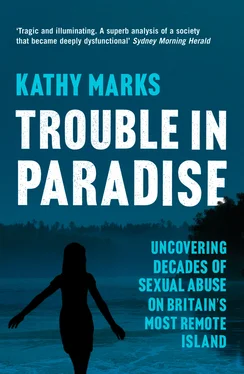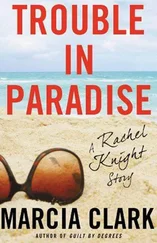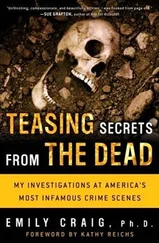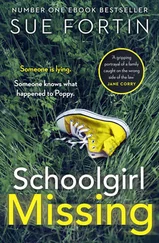The Lodge, generally occupied by official visitors, was a pre-fabricated four-bedroom house, rather basic, with spartan furnishings. It reminded me of my student days 20 years earlier, and the comparison was fitting, for we six adults, aged from late 20s to late 50s, were about to revert to precisely that kind of communal set-up. I agreed to share a room with Claire Harvey, a reporter with The Australian newspaper. Ewart Barnsley, the Television New Zealand (TVNZ) correspondent, took up residence with his cameraman, Zane Willis. Neil Tweedie, of Britain’s Daily Telegraph , was to have his own room, as would Sue Ingram from Radio New Zealand.
The Lodge was not only our new home, but a workspace. Media interest in the forthcoming trials was intense; TVNZ’s footage would be broadcast around the world, and our syndicated press stories and photographs would be published widely. I was acutely aware that we were all filing for different time zones, and mostly for more than one outlet—in my case, newspapers in the UK and New Zealand. Television, radio and print each had its own demands. I wondered how we would fare, all cooped up together and confronting Pitcairn’s peculiar logistical challenges.
Laptops were quickly arranged on the dining-room table and hooked up to the relatively new internet system. Zane and Ewart set up an editing suite in their bedroom. Satellite phones were lined up on a grassy bank behind the house, antennae pointing optimistically skywards: the island had no landline telephones and mobiles had not functioned since we had left Tahiti. Satphones would be our only means of speaking to anyone in the outside world.
We had brought with us every conceivable piece of technical equipment, as there was no question of getting anything repaired or replaced on Pitcairn. For the other necessities of life, only limited items would be available in the local shop. Packing for the trip had involved trying to envisage every eventuality—and we had only been allowed 20 kilograms of luggage.
After briefly settling in, Claire and I set off to explore. A back lane wound up past the Mission House, usually inhabited by the resident Seventh-day Adventist pastor but temporarily assigned to the three trial judges from New Zealand. The islanders were all Adventists, having converted en masse in the late 19th century. Beyond the Mission House, past a tall mango tree, stood Pitcairn’s newest building: a large, L-shaped prison, elevated on stilts above a dirt yard, with six double cells fronted by a wide wooden deck. The prison, which looked quite attractive, had been built by men who were at risk of becoming its first inmates—no one had wanted to miss out on the work, even in the circumstances.
The lane spat us out in the village, Adamstown, which appeared to be deserted. Scattered along the main road were houses of weatherboard and corrugated iron, somewhat ramshackle-looking; other homes, all single-storey, were found off a jumble of tracks that meandered further up the hillside. Although there was, notwithstanding the steep terrain, quite a bit of space on which to build, people seemed to be living almost on top of each other.
Above the main road was the square, the heart of the community, where a few mainly timber buildings clustered around a patch of roughly laid concrete. The brick Adventist church faced the public hall, with its graceful white verandah; between them were squeezed the pint-sized library and post office. A bench ran along the fourth side.
In front of the hall, which was also the courthouse, was an imposing sight: the Bounty ’s anchor, mounted on a plinth. Outside the hall, among several notices pinned up on a board, was one that warned the islanders about ‘personal incidents that could be sensationalised in the media’. It was signed by Steve Christian. Another reminded the locals that ‘malicious gossip’ was an offence.
As we wandered back to the Lodge, I was struck by the stillness in the lanes and a heaviness in the air. Dusk was falling, but it was still humid, and everything around us seemed exaggerated: the spring flowers were too vivid, as if daubed from a child’s palette, the bees buzzing around them were a little too loud. Perhaps I was affected by thoughts of why we had come here. But I smelt a definite whiff of menace.
My other lasting impression was the sheer ordinariness of the place. While the island had a kind of wild beauty, Adamstown looked like a run-down rural village in England or New Zealand. And it was tiny. Already I felt hemmed in, and unsettled by the omnipresent ocean, an immense blue blanket swaddling and smothering us, a wall separating Pitcairn from the world. The sense of isolation was overpowering.
Back home, we were greeted by the aroma of something burning. Baking was one of the new skills we would have to learn, for bread, like so many everyday commodities, could not be bought. A colleague had gamely put a loaf in the oven, but then forgotten about it, distracted by deadlines.
At 10 p.m. the living room went dark, prompting a chorus of groans and curses. Public electricity, supplied by a diesel generator, was rationed to ten hours a day. Most homes had a back-up system, with a bank of 12-volt batteries providing a few hours of extra power. However, in our ignorance we had already drained our batteries, and had to carry on working by candlelight.
Hours later, after everyone else had gone to bed, I paced up and down outside the house, trying to send my first day’s copy via satellite phone. The temperature had dropped, and I was surrounded by a darkness more complete than I had ever experienced. With no moon or stars, and no artificial light for hundreds of miles, I would not have found our back door again without a torch.
As I waved my phone around like a conductor’s baton, searching for a signal, I reflected on the weeks that lay ahead of me. Pitcairn would be no run-of-the-mill assignment, that was clear. And it was clear, too, that the story was about more than just the child abuse trials. It was about a strange little community, marching to its own tune in the middle of nowhere—and at the core of which we were now ensconced, rather uneasily.
CHAPTER 2 Mutiny, murder and myth-making
The next morning I got up and took a hot shower. Only later did I realise that, on Pitcairn, hot water does not simply arrive through the tap. A wood fire in a little shed near the house heats a copper boiler, which in turn heats cold water pipes leading to a storage tank. But in order for this to happen, a fire has to be built. And firewood has to be chopped.
Fortunately for the rest of us, Ewart Barnsley, the TVNZ journalist, was an early riser with a practical disposition. Shortly after dawn, he had chopped wood and lit the fire. From then on, he made that his daily chore.
We were discovering some of the other quirks of Pitcairn life. The ‘duncan’, for instance, which is an outside pit toilet. Ours was situated about 30 feet from the Lodge. The island does not have a sewerage system, and its only source of water, for drinking and washing, is rain.
Then there were the land crabs that lurked around, some the size of a dinner plate, turning a night-time trip to the duncan into a hair-raising ordeal. These fearsome-looking creatures usually tucked their soft bodies inside a coconut shell for protection, but we heard tales of crabs seen wearing a sweetcorn tin, a plastic doll’s head, and a Pond’s Cold Cream jar.
Should any of us encounter a particularly aggressive crab, or one of Pitcairn’s formidable spiders, help was close by, and it had an English accent. Three British diplomats—among 29 outsiders who had recently descended on the island, nearly doubling its population—were installed next door to us in the Government Hostel, another pre-fabricated dwelling for visitors. For the trials, just one new house had been put up, called McCoy’s after one of the mutineers, and it had been assigned to the prosecution team of three lawyers and two police officers. They found themselves living next door to Steve Christian, the Pitcairn mayor, who was facing court on six counts of rape and four of indecent assault. And the defence lawyers? They were sleeping in cells in the new jail.
Читать дальше












